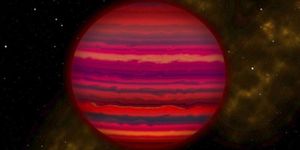New Species of Whale Identified in the Pacific Ocean
In June of 2014, a strange beaked whale-like carcass washed up on the shore of Alaska’s Bering Sea, just out of the Pacific Ocean. The specimen was identified as a Baird’s beaked whale at first, but after closer examination, it was found that there some inconsistences in this specimen that turned out pointing scientists in another direction.
It was a new whale species, and scientists were baffled by the thought that they had discovered something so large from our oceans that we still have never discovered before.

Image Credit: Karin Holser
Although the body resembles a beaked whale in many ways, some of the inconsistences that were pointed out were that the skin pigment was too dark, the dorsal fin wasn’t as small and tough as a beaked whale’s dorsal fin would be, and even more was the size of the whale was relatively small; at just 2/3 the size of an adult beaked whale, it was small enough to be a youngling, yet the teeth showed signs of being old and aged.
So there were a lot of inconsistencies. Despite the fact that this could have been a small, young beaked whale, it showed signs of being elderly and a lot of other bodily features just didn’t add up with our understanding of beaked whales.
In a study published just this month, scientists had compared the washed-up species to 178 other known whale species from a National Oceanic and Atmospheric Administration
(NOAA) database, and no match could be determined. It became clear that this was an entirely new species of whale that hadn’t been added to the books yet.

Image Credit: NOAA
This certainly isn’t the first time that we’ve come across this relatively odd type of whale; Quartz reports that we’ve actually been spotting them near Japan since the 1940’s, and that other hints have surfaced themselves in 2004 and 2013, but there has been no such evidence to claim outright that it was a new species considering most people mistook them for a beaked whale.
Now, of course, with a specimen in-hand, there’s more than can be said for the species. Nevertheless, we still know very little about them. We don’t know anything about their origin, or where in the world they like to live, so tracking them down is going to be difficult.
"We don't know how many there are, where they're typically found, anything," Phillip Morin, a molecular geneticist at the National Oceanic and Atmospheric Administration's Southwest Fisheries Science Center said to National Geographic. "But we're going to start looking."
It’s definitely battling when such a large creature washes up that you know nothing about. After all, it’s not very difficult to spot whales due to their size. It just goes to show what a large and unexplored place our own Earth really is.
Source: National Geographic, Quartz








